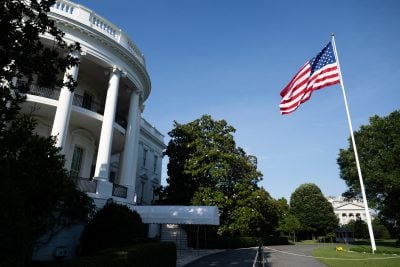The volume of Chinese lending to Africa has slowed dramatically in recent years – especially during the Covid-19 pandemic – but Beijing continues to play an important role in providing the continent with finance. The Chinese government has promised to target future funding at clean energy and climate adaptation projects, and its policy on managing existing African debt – owed to its own banks as well as to other lenders – will have a big impact on the economic stability of many African countries. At the same time, alongside growing trade ties there has been a drive to promote the use of the yuan as a reserve currency, and African governments are beginning to issue “panda bonds” denominated in Chinese currency.
Financial ties between China and Africa have strengthened hugely over the past two decades. Chinese foreign direct investment in Africa increased from $75m in 2003 to $5bn in 2022. China is now the largest bilateral creditor to Africa, accounting for close to 20% of the region’s external sovereign debt, up from 2% in 2004.
According to the International Monetary Fund (IMF) about 20% of Africa’s exports are shipped to China, mainly mining and energy commodities; and around 16% of all African imports come from China. Both these proportions are roughly in line with the sizes of their populations. Total trade between Africa and China reached a record $282bn last year. China’s economic health is so important to Africa that the IMF estimates that GDP growth in Sub-Saharan Africa falls 0.25% for every 1% decline in China’s GDP.
Effect of the Belt and Road Initiative
Chinese lending to Africa has increased since the turn of the millennium, but particularly since the Belt and Road Initiative (BRI) was launched in 2013. The initiative aimed to build infrastructure projects in developing countries to promote much greater trade with China, as a form of soft power to promote Chinese influence and to provide investment opportunities for Chinese companies.
This final factor became more important as competition intensified and economic growth slowed in China, prompting Beijing to seek outlets for Chinese construction and engineering companies in other parts of the world. Chinese state-owned banks lent huge sums to projects involving Chinese companies. According to Boston University’s Global China Initiative (GCI), China lent $170bn to Africa between 2000 and 2022.
But the scale of Chinese lending to Africa has not been uniform across the continent. In some cases it has fallen over the past five years. The GCI lists just seven loans that were concluded in 2021, worth a combined $1.22bn. There were nine loans totalling $994m in 2022 – the first time the figure had fallen below $1bn for 18 years. In contrast, annual average lending was $7.7bn over the two decades from 2000, and 2016 saw a $28.5bn peak – although almost 70% of that large sum went to commodity-rich Angola.
This drop-off was due to both supply and demand factors.
In terms of supply factors, the Covid-19 crisis had some negative impact on construction activity but, most importantly, social distancing measures meant that many crucial government-to-government negotiations and visits to finalise new project deals were temporarily paused.
Prior to this, the demand side was also creating challenges for lending. At least since 2018 many African governments have come under more pressure than ever from the IMF and World Bank in particular to reduce their debt and avoid “debt distress”.
Debt levels
There is a debate to be had over how troubling African sovereign debt actually is. Only three countries – Ethiopia, Ghana and Zambia – have actually defaulted on their debt repayments since 2020; they have varying amounts of Chinese debt. Yet the IMF puts the number of African countries in or at high risk of debt distress at 21.
At the end of 2022, African governments owed a total of $655bn to external creditors, according to campaign group ONE. African governments paid $89bn in debt servicing in 2024, the group said. That said, debt levels remained fairly flat from 2020 to 2022, since very few external creditors offered new lending during the pandemic. Chinese bilateral debt (as opposed to private debt) accounted for under 20% or $63bn of all debt, but that nevertheless makes Beijing Africa’s biggest bilateral creditor
African governments have generally welcomed this Chinese financing not only because it was more concessional than finance available from others – especially for African middle-income countries – but also because it was almost always particularly directed to infrastructure projects, many of which had been pipe dreams since the 1960s.
Anatomy of Chinese state lenders
Yet critics argue that Chinese lending has driven rising debt levels on the continent. Most of this money has been provided by China Development Bank (CDB) and Export-Import Bank of China (China Exim), which have overlapping remits. Set up in 1994, state-owned China Development Bank (CDB) at first provided financing for infrastructure projects exclusively within China, but has expanded overseas over the past two decades. The CDB describes one of its eight main funding areas as the “Belt and Road Initiative, international cooperation in industrial capacity, equipment manufacturing, infrastructure connectivity, energy and resources, and Chinese enterprises ‘going global’.”
China Exim is also dedicated to supporting China’s foreign trade, investment and international economic cooperation. Two of its four overseas offices are in Africa. Its financial support goes to foreign trade, cross-border investment, the BRI, international industrial capacity and equipment manufacturing cooperation, science and technology, cultural industries and the “going global” endeavours of small and medium enterprises (SMEs).
Beijing has now said that it will increase lending to Africa related to connectivity, the digital economy and green development. The Chinese president described the next phase of the BRI involving not just “flagship projects” but also “smart and beautiful projects”, at the BRI Forum in October 2023.
These areas should therefore still sit within the remit of both China Exim and CDB. The big uncertainty is whether African governments will again increase their appetite for infrastructure projects and related Chinese borrowing.
If the interest shown by African governments in the Asian Infrastructure Investment Bank (AIIB), which has a large proportion of its capital from China, is anything to go by, it is likely that appetite will remain high.
So far the AIIB has 16 paid-up African members (Algeria, Benin, Côte d’Ivoire, Egypt, Ethiopia, Ghana, Guinea, Liberia, Libya, Madagascar, Morocco, Rwanda, South Africa, Sudan, Togo and Tunisia) and 6 African prospective members (Djibouti, Kenya, Mauritania, Nigeria, Senegal and Tanzania).
Meanwhile, China has seen a record number of visits from African leaders in 2023, meaning government to government negotiations are back in full swing.
China’s foreign direct investment
Whether or not Chinese bilateral lending rebounds, Chinese private sector companies may still invest in the continent. They may choose to lend to Ethiopia’s growing textile industry, or through the growing number of Chinese-made solar energy modules being shipped to the continent. The World Economic Forum estimates that 70% of the 3,000 Chinese enterprises that have invested in Africa are private sector companies.
In addition, some Chinese companies have begun to shift manufacturing capacity out of China because of rising labour costs and to bypass duties imposed on Chinese goods by countries including the US.
Most of this outward investment goes to other Asian countries, but African states could benefit if they can improve their ancillary infrastructure and provide attractive regulation. The creation of the African Continental Free Trade Area could also encourage Chinese manufacturers who should be able to access the continent as a whole from a single market.
Emerging financial links
Lending, investment and trade between China and African economies is generally concluded in US dollars – but dollars are in short supply in many African countries, with depreciation against the dollar a big and regularly resurfacing problem since 2022.
This could drive African support for Beijing’s plan to promote the use of the yuan in international trade, although further currency and capital controls in China present challenges and liberalisation may be needed before the yuan becomes a reserve currency to rival the dollar anytime soon. However, the yuan’s adoption in Africa is growing through increased use in trade transactions and central bank currency swaps.
The first African country to sign a bilateral currency swap agreement with China was South Africa, in 2015, followed by Egypt in 2016. In 2018 Nigeria followed suit. All these arrangements have been extended since. The total value of these swaps is small globally – just under $10bn – but other similar arrangements could follow with other African countries in due course.
Panda bonds
In addition, the government of Egypt issued Africa’s first sovereign “panda bond” last October. Panda bonds are issued by non-Chinese organisations, including sovereigns and multilaterals, but in China and in Chinese yuan. Priced at 3.5%, the three-year Egyptian bond raised 3.5bn yuan ($480m) to support micro-enterprises and green projects, and benefited from partial credit guarantees from the African Development Bank and the AIIB.
Egypt’s minister of finance, Mohamed Maait, said: “Egypt is the first African sovereign to issue panda sustainable bonds in the Chinese financial markets. This is a historical move not just for the country but for the entire continent. We have paved the way for alternate, sustainable financing for our African neighbours and have deepened the partnership with our Chinese counterparts. It’s more than just a financing source; it’s a testimony of how important our economic and financial ties are with the government of China.” Egypt also became the first North African country to issue a green bond in 2020 and the first to issue Japanese “samurai bonds”, the second tranche of these, in December 2023, being worth 75bn yen ($500m).
In March the Kenyan government announced plans for a KSh66bn ($500m) panda bond to cover its budget deficit and finance infrastructure projects, following talks between the Kenyan National Treasury and Chinese government. It also plans a KSh80bn samurai bond on the back of an agreement between Nairobi and Nippon Export and Investment Insurance. The African Development Bank said that it would support other African countries in issuing panda bonds.
Inter-bank cooperation
African banks – both multilateral and commercial – are increasingly working with their Chinese counterparts, and this is a trend that is likely to continue.
Back in 2014, the African Development Bank (AfDB) and People’s Bank of China signed an agreement for a $2bn co-financing fund spanning 10 years to finance sovereign and non-sovereign guaranteed development projects on the continent. By 2022, Chinese banks such as CDB and China Exim had invested in various ways a further $2.2bn into African banks such as Afreximbank, the Africa Finance Corporation (AFC) and the Trade and Development Bank (TDB). In 2023 China Development Bank and Afreximbank signed a $400m special loan agreement for African SMEs.
On the commercial side, the African continent’s biggest bank, South Africa’s Standard Bank Group, has a 15-year partnership with Industrial and Commercial Bank of China (ICBC) that, Standard Bank says, enabled $600m trade flows between the two regions in 2022 alone. The two banks are now working to leverage Africa’s agricultural sector to supply Chinese consumers. Standard Bank has now supported more than 3,500 Chinese enterprises, mostly private companies, in 15 African markets.
Standard Bank’s CEO for business and commercial banking, William Blackie, said: “This strategic and mutually beneficial partnership broadens China’s relationships with Africa and gives African businesses access to the world’s largest and most dynamic market… Standard Bank, together with ICBC, have invested in building the infrastructure and relationships required to give African and Chinese businesses easier access to the opportunities in this strategic trade corridor.”
In May 2024, another South African bank, Absa, opened a non-banking subsidiary in Beijing to promote new opportunities between China and Africa. The new office will provide support to Chinese clients wanting to conclude transactions in Africa. Absa CEO Arrie Rautenbach said: “China is such a strategically important market for Africa. Our expansion into this dynamic market represents an exciting opportunity to unlock new avenues of growth and prosperity for Africa and China.”
Want to continue reading? Subscribe today.
You've read all your free articles for this month! Subscribe now to enjoy full access to our content.
Digital Monthly
£8.00 / month
Receive full unlimited access to our articles, opinions, podcasts and more.
Digital Yearly
£70.00 / year
Our best value offer - save £26 and gain access to all of our digital content for an entire year!

 Sign in with Google
Sign in with Google 



